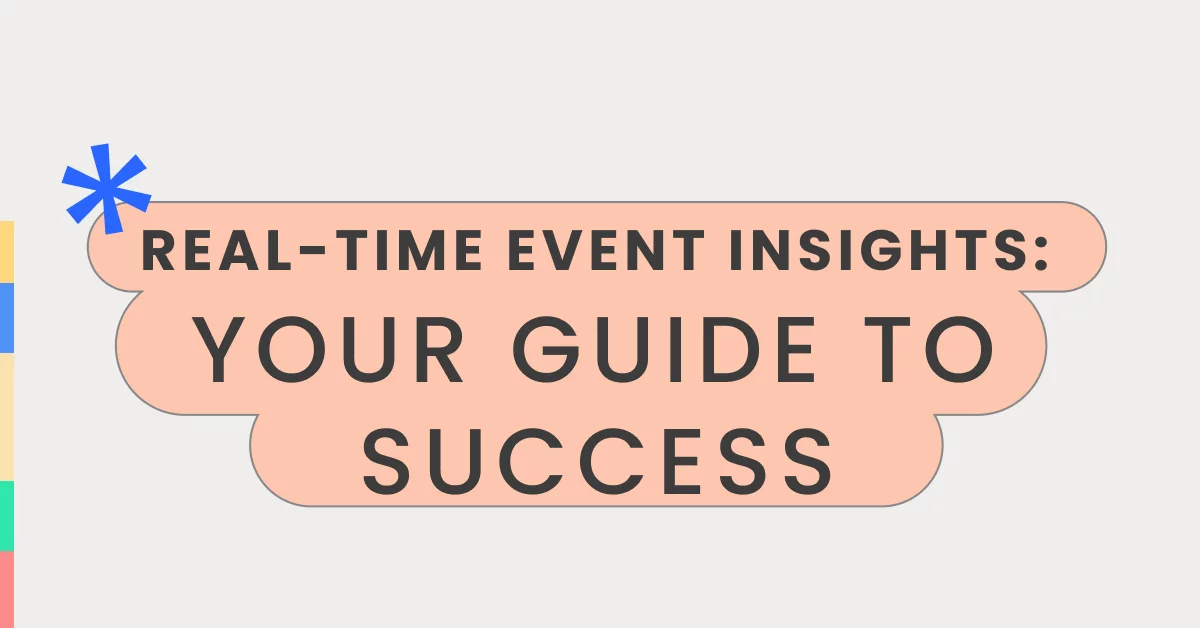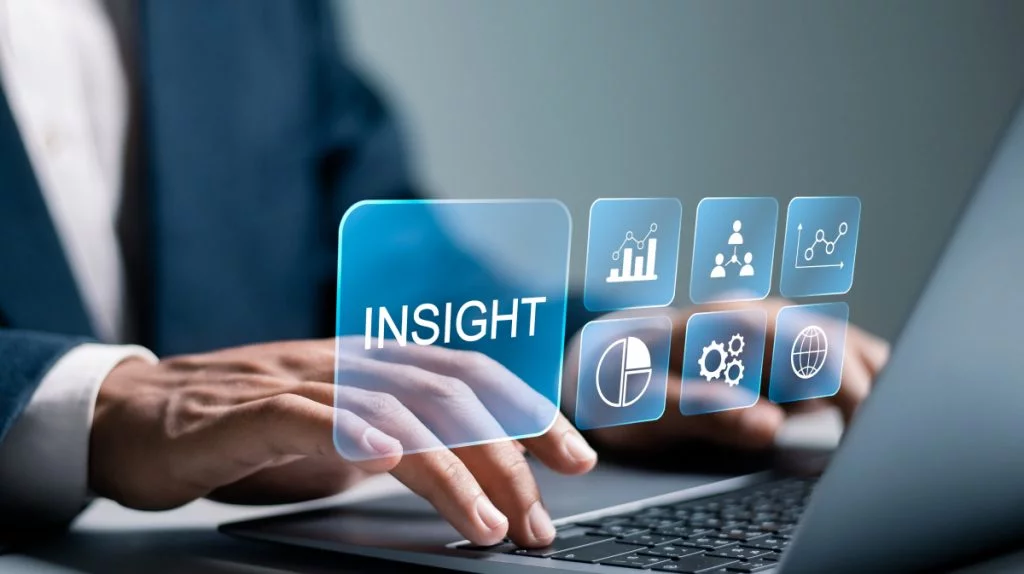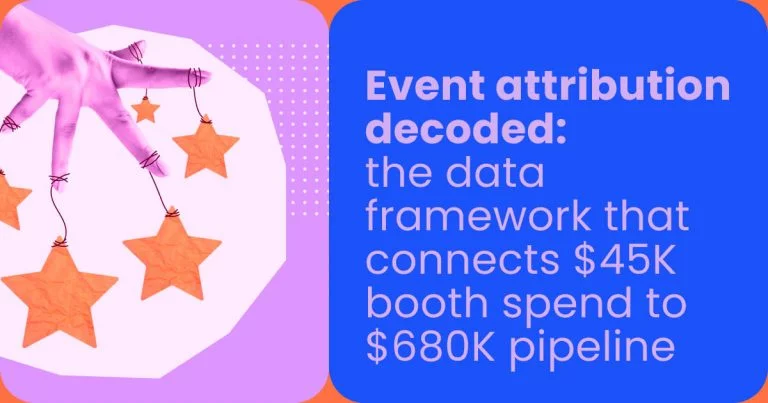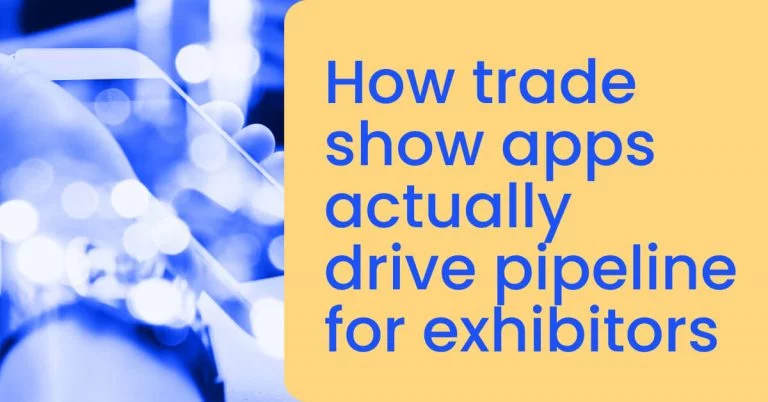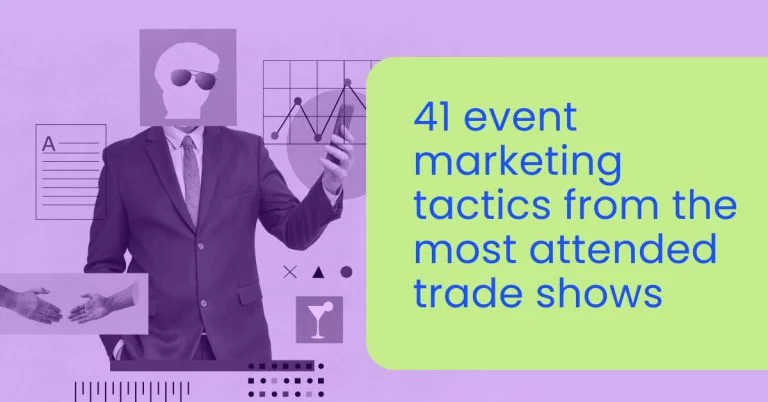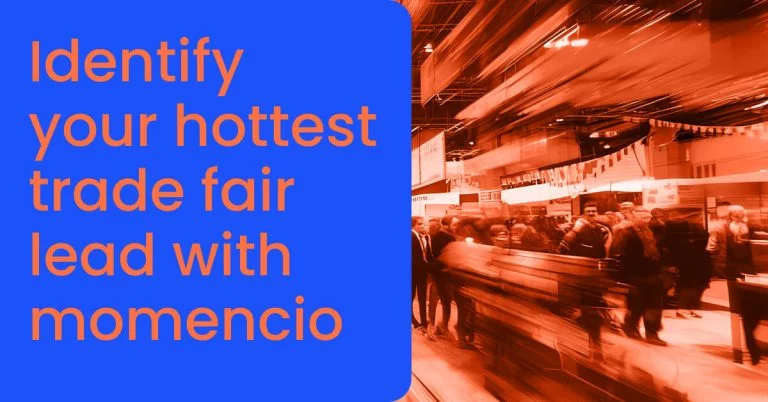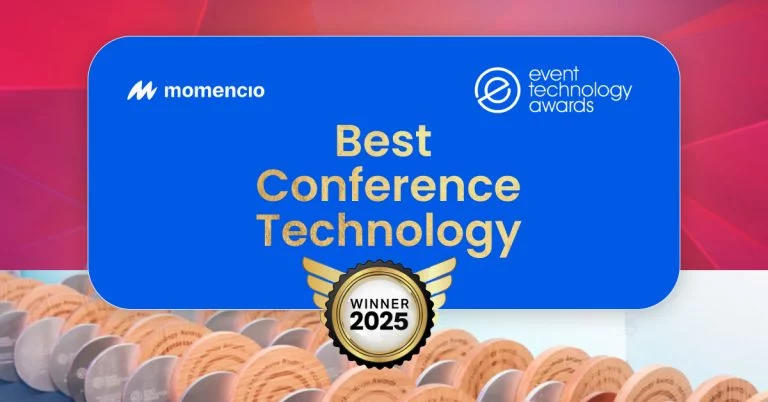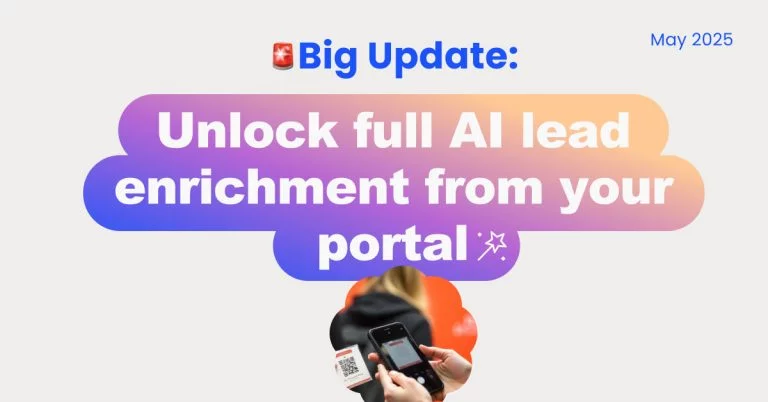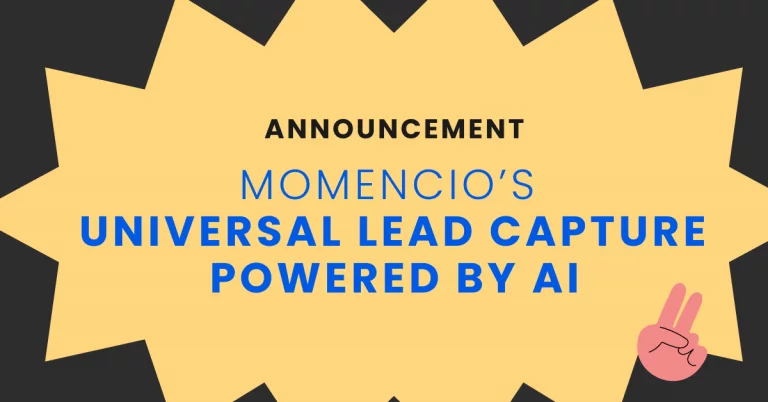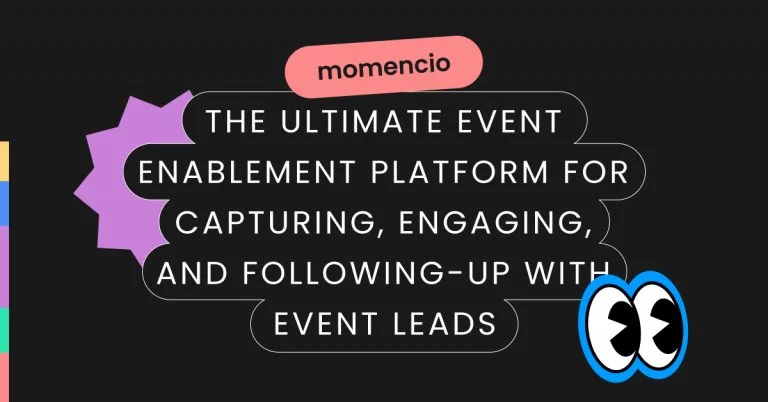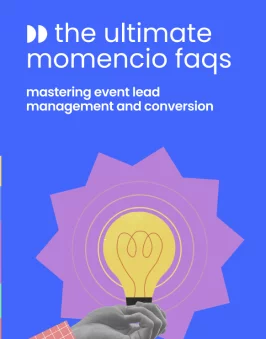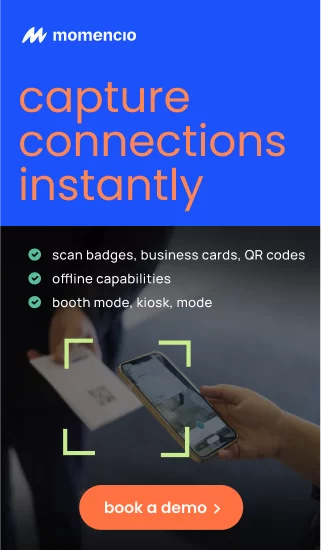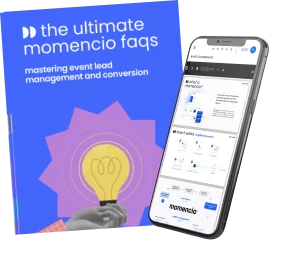Real-time event insights have revolutionized the way events are managed and executed. For event planners and marketers, leveraging real-time data can significantly enhance decision-making, optimize event performance, and boost attendee engagement. A study by EventMB reveals that 83% of event planners believe that real-time data analytics improve their decision-making capabilities during events. Furthermore, a survey by Cvent found that 78% of event professionals consider real-time data essential for delivering personalized experiences.
In this article, we will explore the critical role of real-time insights in modern event planning, the top tools for gathering and analyzing real-time data, and practical strategies for leveraging this data to create unforgettable attendee experiences. From optimizing session schedules to enhancing post-event follow-ups, real-time data empowers event professionals to make informed decisions that drive success. Join us as we delve into the transformative potential of real-time insights in the event industry.
The Role of Real-Time Event Insights
Importance of Real-Time Data
The ability to access and utilize real-time data is a game-changer. Real-time event insights empower event planners, marketers, and organizers to make informed decisions that enhance the overall event experience and drive measurable outcomes.
- Enhancing Attendee Experience: Real-time event insights enable organizers to monitor attendee engagement and satisfaction levels throughout the event. For example, tracking which sessions are most attended or which booths are attracting the most visitors helps in understanding attendees’ interests and preferences. This data can be used to make on-the-spot adjustments, such as reallocating resources to popular areas or providing additional support where needed.
- Improving Operational Efficiency: Real-time data also helps in streamlining event operations. By monitoring logistics in real-time, organizers can identify and address issues promptly, such as long lines at registration or bottlenecks in traffic flow. This ensures that the event runs efficiently and attendees have a seamless experience.
- Facilitating Personalized Engagement: Personalized experiences are increasingly important in today’s event landscape. Real-time insights allow organizers to tailor interactions based on attendee behavior and preferences. For instance, if an attendee frequently visits sessions related to a particular topic, the event app can push personalized notifications about similar upcoming sessions or networking opportunities.
- Measuring Real-Time ROI: For sponsors and exhibitors, understanding the return on investment (ROI) during the event is crucial. Real-time data provides insights into booth traffic, lead generation, and engagement levels, helping exhibitors assess the effectiveness of their strategies and make necessary adjustments to maximize their ROI.
- Supporting Immediate Feedback: Real-time event insights enable organizers to gather immediate feedback from attendees through live polls and surveys. This feedback can be used to make real-time improvements, ensuring that the event meets the expectations of the audience. It also helps identify areas of improvement for future events.
In summary, real-time data must be considered. It enhances the attendee experience, improves operational efficiency, facilitates personalized engagement, measures real-time ROI, and supports immediate feedback, making it an indispensable tool for successful event management.
Impact on Decision-Making
The impact of real-time event insights on decision-making is profound. By providing immediate access to data, these insights enable event professionals to make informed decisions quickly and effectively, ensuring that the event achieves its goals and delivers value to all stakeholders.
- Dynamic Event Adjustments: One of the most significant advantages of real-time data is the ability to make dynamic adjustments during the event. For example, suppose a session needs to improve in terms of attendance. In that case, organizers can quickly analyze the data to understand the cause and take corrective actions, such as changing the session timing or promoting it more aggressively.
- Enhanced Resource Allocation: Real-time event insights allow for better resource allocation. By monitoring attendee movements and engagement levels, organizers can allocate resources more efficiently, ensuring that high-traffic areas are well-staffed and equipped. This not only enhances the attendee experience but also optimizes the use of resources, reducing waste and improving overall efficiency.
- Proactive Problem-Solving: Real-time data enables proactive problem-solving. For instance, if there is a sudden drop in Wi-Fi performance, organizers can quickly identify the issue and deploy technical support to resolve it before it affects a significant portion of the attendees. This proactive approach helps in maintaining a smooth and uninterrupted event experience.
- Informed Decision-Making: Access to real-time event insights allows organizers to make informed decisions based on accurate and up-to-date information. Whether it’s adjusting the schedule, reallocating resources, or addressing attendee feedback, having real-time data at hand ensures that decisions are based on facts rather than assumptions.
- Strategic Planning for Future Events: The insights gained from real-time data during an event are invaluable for strategic planning of future events. By analyzing what worked and what didn’t, organizers can refine their strategies and improve the overall effectiveness of their events. This continuous improvement cycle helps deliver better experiences and achieve higher ROI in subsequent events.
In conclusion, the impact of real-time event insights on decision-making is substantial. They enable dynamic adjustments, enhanced resource allocation, proactive problem-solving, informed decision-making, and strategic planning for future events. By leveraging real-time data, event professionals can ensure that their events are not only successful but also continuously improving, delivering more excellent value to attendees, sponsors, and stakeholders.
Tools for Real-Time Data Analytics
Real-time event insights rely heavily on advanced tools and technologies that can capture, analyze, and present data as it happens. These tools are designed to enhance the capabilities of event planners and marketers, enabling them to make informed decisions on the fly and optimize the attendee experience. Here, we will explore some of the most effective tools for real-time data analytics at events, including the comprehensive capabilities of momencio.
Event Apps
- momencio: momencio is a leading event platform that offers robust real-time data analytics. It provides insights into attendee interactions, session attendance, and engagement levels through its mobile app and integrated tools. momencio’s analytics dashboard allows for easy monitoring of key performance indicators (KPIs), such as session ratings and survey responses. Additionally, its real-time lead capture and engagement features ensure that every interaction is tracked and analyzed, providing valuable data to optimize event performance.
- EventMobi: EventMobi is another comprehensive event management platform that offers real-time analytics through its mobile app. It tracks attendee interactions and engagement levels, providing valuable insights that help organizers adjust their strategies in real time.
- Whova: Whova is known for its real-time data capabilities, offering features like attendee check-ins, live polling, and instant feedback collection. Whova’s real-time analytics help organizers understand attendee behavior and preferences, enabling them to personalize the event experience dynamically.
Identification and Tracking Technology
- momencio’s Badge Scanning: momencio offers advanced badge scanning technology that captures real-time data on attendee movements and interactions. This feature helps in tracking session attendance, booth visits, and overall engagement, providing a comprehensive view of attendee behavior. The data gathered can be used to make on-the-spot adjustments to improve event flow and attendee satisfaction.
- RFID and NFC Badges: Radio-frequency identification (RFID) and near-field communication (NFC) badges are widely used for tracking attendee movements and interactions in real-time. These badges capture data on attendee check-ins, session attendance, and booth visits, providing a comprehensive view of engagement patterns.
Wearable Technology
- Smart Wristbands: Smart wristbands provide real-time data on attendee engagement, tracking movement, activity levels, and even biometric data such as heart rate and stress levels. This data can be used to gauge attendee satisfaction and adjust the event environment to improve comfort and engagement.
Social Media Analytics
- Hootsuite: Hootsuite is a social media management platform that offers real-time analytics on social media engagement. It tracks mentions, hashtags, and sentiment, providing insights into attendee perceptions and trends.
- Sprout Social: Sprout Social provides comprehensive real-time social media analytics, including audience demographics, engagement metrics, and sentiment analysis.
Survey and Polling Tools
- momencio’s Interactive Surveys: momencio includes features for conducting interactive surveys and live polls, enabling organizers to gather immediate feedback from attendees. The real-time data collected helps organizers gauge audience engagement and adjust content delivery accordingly.
- Sli. Do: Sli.do is a popular tool for live polling and audience interaction. It allows organizers to conduct real-time polls, Q&A sessions, and surveys, providing immediate feedback from attendees. The real-time data collected through Sli.do helps organizers understand audience preferences and make necessary adjustments.
- Mentimeter: Mentimeter offers features like live polls, quizzes, and interactive presentations, enabling organizers to collect real-time feedback and insights. This data can be used to tailor sessions to attendee preferences and ensure a more engaging and interactive event experience.
Integrating Real-Time Data Tools for Maximum Impact
Integrating multiple real-time data tools can provide a comprehensive view of attendee engagement and event performance. Here’s how to do it effectively:
- Centralized Data Dashboard: Using a centralized dashboard that integrates data from various tools (event apps, identification and tracking technologies, wearable technology, social media analytics, and polling tools) can provide a holistic view of the event in real time. Platforms like Tableau or Power BI can be used to create custom dashboards that display real-time insights, helping organizers make informed decisions quickly.
- Seamless Communication: Ensure that all tools used for real-time data collection are seamlessly integrated and communicate effectively with each other. This avoids data silos and ensures that all relevant information is accessible in one place. For example, integrating RFID badge data with the event app can provide a complete picture of attendee movements and interactions.
- Real-Time Alerts: Set up real-time alerts for critical metrics. For example, if session attendance drops below a certain threshold, the system can send an alert to the organizers to investigate and take corrective action. Real-time alerts ensure that issues are addressed promptly, minimizing their impact on the event.
Real-time data analytics tools are essential for modern event management. They provide immediate insights into attendee behavior, engagement levels, and operational efficiency, enabling organizers to make data-driven decisions that enhance the overall event experience. By leveraging tools such as momencio, event apps, identification and tracking technology, wearable technology, social media analytics, and survey tools, event professionals can ensure their events are not only successful but also continuously improving. Embracing real-time event insights is critical to delivering personalized, engaging, and efficient events that meet the needs of all stakeholders.
Leveraging Real-Time Data for Enhanced Attendee Experience
Leveraging real-time event insights is crucial for creating a personalized and engaging attendee experience. By utilizing real-time data, event organizers can tailor interactions, make on-the-fly adjustments, and ensure that every aspect of the event meets the expectations and needs of the attendees. This section will explore how to use real-time data to enhance the attendee experience effectively.
Personalized Engagement
- Understanding Attendee Preferences: Real-time event insights allow organizers to gather data on attendee preferences and interests as they interact with various aspects of the event. This data can be used to personalize communications and recommendations. For example, suppose an attendee shows a particular interest in sessions related to digital marketing. In that case, the event app can push notifications about upcoming sessions or networking opportunities related to that topic. This personalized approach increases engagement and satisfaction.
Example: At a tech conference, an attendee visits multiple sessions on artificial intelligence (AI). Using real-time data, the event app sends personalized notifications about AI-focused workshops and meetups, enhancing the attendee’s experience and ensuring they get the most out of the event.
- Tailored Content Delivery: Real-time data helps in delivering tailored content to attendees. For example, based on the sessions attended and interactions tracked, personalized content such as articles, whitepapers, or video links can be sent to attendees. This not only enhances their learning experience but also keeps them engaged and interested.
Example: An attendee at a healthcare conference attends several sessions on telemedicine. The event platform uses this data to send the attendee relevant research papers and video links on the latest trends in telemedicine, enriching their event experience.
- Personalized Follow-Ups: Post-event follow-ups can be significantly enhanced using real-time data. By analyzing attendee behavior and interactions during the event, organizers can send personalized follow-up emails that address the specific interests and needs of each attendee. This customized approach increases the likelihood of continued engagement and conversion.
Example: After a marketing summit, an attendee who engaged heavily with sessions on social media marketing receives a follow-up email with additional resources on social media strategies, as well as an invitation to a webinar on the same topic. This targeted follow-up is more likely to result in continued engagement and a positive attendee experience.
Real-Time Adjustments
- Session Optimization: Real-time event insights allow organizers to monitor session attendance and engagement levels. If a session is underperforming, organizers can make immediate adjustments, such as changing the session timing, promoting it through the event app, or even merging it with another session to boost attendance.
Example: During a business conference, organizers notice that a particular session on emerging markets is attracting few attendees. Using real-time data, they decide to promote the session via push notifications and social media, resulting in increased attendance and engagement.
- Resource Allocation: Real-time data enables better resource allocation. For instance, if a particular area of the event venue, such as a popular booth or networking lounge, is attracting a lot of traffic, organizers can allocate more staff or resources to that area to ensure smooth operations and a positive attendee experience.
Example: At a trade show, a popular exhibitor booth experiences high traffic, causing long wait times. Real-time data alerts the organizers, who then allocate additional staff to the booth to manage the crowd and improve the attendee experience.
- Immediate Issue Resolution: Real-time event insights help in identifying and resolving issues promptly. Whether it’s a technical glitch, logistical problem, or attendee complaint, having access to real-time data allows organizers to address issues quickly, minimizing disruptions and enhancing the overall event experience.
Example: During a large conference, attendees report issues with Wi-Fi connectivity. Real-time feedback collected through the event app allows organizers to quickly deploy technical support, resolving the problem and ensuring attendees remain connected and engaged.
Improving Post-Event Follow-Ups
- Data-Driven Follow-Up Strategies: Real-time event insights provide valuable data that can be used to craft personalized and effective post-event follow-up strategies. By analyzing attendee interactions, organizers can segment attendees based on their interests and engagement levels, allowing for more targeted and relevant follow-up communications.
Example: After a financial services conference, organizers use real-time data to segment attendees into groups based on their session attendance and interactions. Each group receives tailored follow-up emails with resources and invitations to future events related to their specific interests.
- Enhanced Lead Nurturing: For B2B events, real-time data is crucial for lead nurturing. By understanding which attendees showed the most interest in specific products or services, sales teams can prioritize their follow-up efforts and tailor their messaging to address the particular needs and interests of each lead.
Example: At a software expo, an attendee spends significant time at a booth showcasing a new CRM platform. Post-event, the sales team uses real-time data to follow up with the attendees, providing detailed information and a personalized demo of the CRM platform, increasing the chances of conversion.
- Continuous Improvement: Real-time event insights not only enhance current events but also provide valuable feedback for future events. By analyzing real-time data, organizers can identify trends, preferences, and areas for improvement, enabling them to refine their strategies and deliver even better experiences in future events.
Example: After an annual marketing conference, organizers analyze real-time data to identify which sessions and activities were most popular and which areas need improvement. This feedback is used to plan next year’s event, ensuring it aligns even more closely with attendee preferences and expectations.
Leveraging real-time event insights is essential for creating personalized, engaging, and efficient event experiences. By understanding attendee preferences, making real-time adjustments, and enhancing post-event follow-ups, organizers can ensure their events meet the needs and expectations of all stakeholders. Tools like momencio, which offer comprehensive real-time data analytics and engagement features, are invaluable in achieving these goals. Embracing real-time data not only enhances the current event experience but also provides a foundation for continuous improvement and long-term success.
Optimizing Event Performance with Real-Time Analytics
Optimizing event performance is critical to achieving the goals and objectives of any event. Real-time event insights provide the data necessary to track key performance indicators (KPIs), allocate resources efficiently, and drive continuous improvement. By leveraging real-time analytics, event organizers can ensure that every aspect of the event runs smoothly and delivers maximum value to attendees and stakeholders.
Tracking Key Performance Indicators (KPIs)
- Session Attendance and Engagement: Real-time data allows organizers to monitor session attendance and engagement levels as they happen. This information helps in understanding which sessions are attracting the most interest and which ones may need additional promotion or adjustment.
Example: At a large industry conference, real-time data shows that a keynote session on emerging technologies is drawing significantly more attendees than expected. Organizers use this data to allocate additional seating and resources, ensuring that all interested attendees can participate and engage.
- Booth Traffic and Interaction: For trade shows and exhibitions, tracking booth traffic and interactions in real-time is crucial. This data helps exhibitors understand which products or services are generating the most interest and engagement.
Example: During a trade show, an exhibitor notices through real-time analytics that their new product demo booth is consistently busy while another booth receives less traffic. Using this data, they decide to reallocate staff to the busy booth to manage the crowd effectively and ensure a better attendee experience.
- Social Media Engagement: Real-time social media analytics provide insights into how attendees are interacting with the event on platforms like Twitter, Facebook, and LinkedIn. This data helps gauge overall sentiment and identify trending topics and conversations.
Example: At a music festival, real-time social media monitoring reveals that a specific artist’s performance is generating a lot of buzz. Organizers can use this information to promote the artist’s upcoming concerts and engage with attendees online, boosting overall event engagement.
Efficient Resource Allocation
- Staff and Volunteer Deployment: Real-time event insights help in deploying staff and volunteers where they are needed most. By monitoring attendee movements and engagement, organizers can ensure that high-traffic areas are well-staffed and that resources are used efficiently.
Example: During a large conference, real-time data indicates that the registration area is experiencing long wait times. Organizers quickly allocate additional staff to the registration desks to expedite the process and reduce wait times for attendees.
- Equipment and Facilities Management: Real-time analytics provide insights into the usage and demand for equipment and facilities, such as audiovisual setups, seating, and refreshments. This data helps in optimizing the allocation and management of these resources.
Example: At a corporate event, real-time data shows that certain breakout rooms are consistently full while others are underutilized. Organizers can use this information to reassign rooms or adjust the schedule to balance attendance across sessions, ensuring that all attendees have a comfortable experience.
- Budget Optimization: Real-time data helps track budget usage and optimize expenditures during the event. This allows organizers to make adjustments in real time to stay within budget while maximizing the value delivered to attendees.
Example: During a multi-day conference, real-time financial tracking reveals that catering costs are higher than anticipated due to increased attendee numbers. Organizers can adjust the menu options or renegotiate with vendors to manage costs without compromising attendee satisfaction.
Continuous Improvement
- Real-Time Feedback and Adjustments: Collecting real-time feedback from attendees through surveys and polls enables organizers to make immediate improvements. This proactive approach helps address issues promptly and enhances the overall event experience.
Example: At an educational seminar, attendees provide real-time feedback through an event app, indicating that the room temperature is too cold. Organizers can adjust the HVAC settings immediately, improving attendee comfort and satisfaction.
- Post-Event Analysis: Real-time event insights are invaluable for post-event analysis. By reviewing the data collected during the event, organizers can identify what worked well and what needs improvement, informing the planning and execution of future events.
Example: After a significant trade show, organizers analyze real-time data to determine which exhibitors attracted the most traffic and which sessions received the highest ratings. This information is used to refine the event format and content for the next year, ensuring continuous improvement.
- Data-Driven Decision Making: Real-time analytics empower organizers to make data-driven decisions throughout the event. This approach ensures that decisions are based on accurate and up-to-date information, leading to better outcomes and higher satisfaction levels for all stakeholders.
Example: At a product launch event, real-time data shows that attendees are particularly interested in a specific feature of the new product. Organizers can use this information to highlight that feature in subsequent presentations and marketing materials, aligning the event’s focus with attendee interests.
Optimizing event performance with real-time analytics is essential for delivering successful and impactful events. By tracking key performance indicators, allocating resources efficiently, and driving continuous improvement, organizers can ensure that their events meet the expectations of attendees and stakeholders. Tools like momencio, which offer comprehensive real-time data analytics and engagement features, are invaluable in achieving these goals. Embracing real-time event insights not only enhances the current event experience but also provides a foundation for long-term success and improvement.
Future Trends in Real-Time Event Data
The future of real-time event data is being shaped by rapid advancements in technology and changing attendee expectations. These trends are transforming how event organizers collect, analyze, and utilize data to create more personalized and engaging experiences. This section explores some of the key emerging technologies and trends that will drive the future of real-time event data analytics.
Emerging Technologies
- Artificial Intelligence and Machine Learning: Artificial intelligence (AI) and machine learning (ML) are becoming integral to real-time event data analytics. These technologies enable advanced data analysis and predictive insights, allowing organizers to understand attendee behavior and preferences more accurately.
Example: AI-powered analytics can predict which sessions will be most popular based on historical data and real-time trends, helping organizers allocate resources and promote sessions more effectively.
- Internet of Things (IoT): The Internet of Things (IoT) connects various devices and sensors to collect and share data in real-time. IoT can enhance event management by providing detailed insights into attendee movements, environmental conditions, and equipment usage.
Example: IoT sensors can monitor room occupancy and temperature, allowing organizers to adjust HVAC settings automatically to ensure a comfortable environment for attendees.
- Augmented Reality (AR) and Virtual Reality (VR): AR and VR technologies are revolutionizing the event experience by providing immersive and interactive environments. These technologies can also generate valuable real-time data on attendee engagement and interaction.
Example: At a trade show, AR can be used to create interactive product demos, while VR can offer virtual tours of exhibitor booths. Real-time data on how attendees interact with these technologies can provide insights into their preferences and interests.
- Blockchain Technology: Blockchain offers a secure and transparent way to manage and verify data. In the context of event management, blockchain can be used to enhance ticketing, ensure data privacy, and provide a transparent record of transactions and interactions.
Example: Blockchain can be used to create tamper-proof digital tickets, reducing fraud and providing a secure way to track attendee entry and movements in real time.
Trends Shaping the Future
- Personalization at Scale: As attendees expect more personalized experiences, the use of real-time data to deliver tailored content and interactions will become increasingly important. Advanced analytics and AI will enable organizers to create personalized experiences for large audiences.
Example: Personalized agendas, content recommendations, and networking opportunities based on real-time data can enhance attendee satisfaction and engagement.
- Hybrid and Virtual Events: The rise of hybrid and virtual events has accelerated the need for real-time data analytics. These events require robust data collection and analysis to ensure seamless integration of physical and digital experiences.
Example: Real-time analytics can track engagement across both in-person and virtual platforms, providing a comprehensive view of attendee behavior and preferences.
- Enhanced Data Security and Privacy: With the increasing collection of real-time data, ensuring data security and privacy will be paramount. New regulations and technologies will focus on protecting attendee data and ensuring compliance with privacy standards.
Example: Implementing strong data encryption, secure data storage, and transparent data policies will become standard practice to protect attendee information.
- Advanced Networking Solutions: Networking is a critical aspect of events, and real-time data can enhance networking opportunities by matching attendees with similar interests and facilitating meaningful connections.
Example: AI-powered networking tools can analyze real-time data to suggest relevant contacts and networking opportunities, improving the overall attendee experience.
- Real-Time Sentiment Analysis: Understanding attendee sentiment in real-time can help organizers gauge the success of their events and make immediate improvements. Sentiment analysis tools can analyze social media posts, feedback forms, and other data sources to provide instant insights.
Example: During a conference, real-time sentiment analysis can identify if attendees are enjoying a particular session or if any issues need addressing, allowing organizers to respond promptly.
Practical Insights and Examples
- Predictive Analytics: Predictive analytics uses historical and real-time data to forecast future trends and behaviors. This technology can help organizers anticipate attendee needs and preferences, leading to better planning and execution.
Example: Predictive analytics can forecast peak attendance times for specific sessions, allowing organizers to manage crowd flow and optimize resource allocation.
- Integrative Platforms: Future event management platforms will integrate multiple data sources, providing a unified view of real-time analytics. These platforms will offer seamless integration with CRM systems, marketing tools, and other technologies.
Example: An integrative platform can combine real-time social media data, attendee interaction data, and CRM data to provide a holistic view of attendee engagement and behavior.
- Interactive Real-Time Dashboards: Interactive dashboards will become more sophisticated, offering real-time visualizations of key metrics and trends. These dashboards will enable organizers to monitor and respond to data more effectively.
Example: A real-time dashboard can display attendee check-ins, session attendance, social media mentions, and other critical metrics, allowing organizers to make data-driven decisions on the fly.
The future of real-time event data is bright, with emerging technologies and trends set to transform how events are managed and experienced. By embracing advancements such as AI, IoT, AR/VR, and blockchain and focusing on personalization, data security, and predictive analytics, event organizers can create more engaging and successful events. Tools like momencio, which offer comprehensive real-time data analytics and engagement features, are essential in navigating this evolving landscape. Leveraging these trends will not only enhance the current event experience but also set the stage for continuous innovation and improvement.
Conclusion
Real-time event insights are revolutionizing the way events are planned, executed, and evaluated. By leveraging advanced technologies and data analytics, event organizers can create more engaging, efficient, and successful events that meet the needs and expectations of attendees, sponsors, and stakeholders. Here are the key takeaways from our exploration of real-time event insights:
Key Takeaways
- Importance of Real-Time Data: Real-time data is essential for understanding attendee behavior and preferences. It allows organizers to monitor engagement, track key performance indicators (KPIs), and make informed decisions on the fly. This capability enhances the overall event experience and ensures that resources are used efficiently.
- Enhancing Decision-Making: The ability to access and analyze data in real time empowers event organizers to make dynamic adjustments and proactive decisions. This includes optimizing session schedules, reallocating resources, and resolving issues promptly. Real-time insights help in creating a seamless and engaging experience for attendees.
- Tools for Real-Time Data Analytics: Various tools and technologies are available to collect and analyze real-time data. These include event apps like momencio, wearable technology such as smart wristbands, and social media analytics platforms like Hootsuite. Each tool provides valuable insights that contribute to a comprehensive understanding of event performance.
- Personalized Engagement: Real-time data enables personalized interactions and content delivery. By understanding attendee preferences and behavior, organizers can tailor experiences to meet individual needs. This personalization enhances engagement and satisfaction, leading to better outcomes for both attendees and organizers.
- Optimizing Event Performance: Real-time analytics are crucial for tracking KPIs, managing resources, and driving continuous improvement. By monitoring session attendance, booth traffic, and social media engagement, organizers can ensure that every aspect of the event is optimized for success.
- Future Trends: Emerging technologies such as artificial intelligence (AI), the Internet of Things (IoT), and augmented reality (AR) are shaping the future of real-time event data analytics. These advancements will enable even more sophisticated data collection and analysis, leading to more personalized and engaging event experiences.
The insights gained from real-time data are invaluable for modern event management. To fully harness the power of real-time event insights, event organizers need a robust platform that integrates various data sources and provides comprehensive analytics. momencio is that platform.
Book a Demo with momencio Today: Experience the power of real-time event insights with momencio. Our platform offers advanced data analytics, personalized engagement features, and seamless integration with other event technologies. Book a demo today to see how momencio can transform your event management strategy and help you achieve your goals.
Contact us now to schedule your demo and take the first step towards more intelligent, data-driven event management with momencio.

FAQs
- How can real-time insights improve decision-making during events?
- Real-time insights provide immediate feedback on various aspects of the event, such as attendee engagement, session attendance, and social media sentiment. This information allows organizers to make informed decisions on the fly, optimizing the event experience and addressing any issues promptly.
- What tools provide the best real-time data analytics?
- Some of the best tools for real-time data analytics include event management platforms like momencio, wearable technology such as RFID badges and intelligent wristbands, and social media analytics tools like Hootsuite and Sprout Social. These tools offer comprehensive data collection and analysis capabilities that help organizers track and optimize event performance.
- How can I leverage real-time data to enhance attendee experience and engagement?
- Real-time data can be used to personalize interactions, tailor content delivery, and make dynamic adjustments during the event. For example, by understanding attendee preferences and behavior, organizers can send personalized notifications, recommend relevant sessions, and adjust resource allocation to improve the overall attendee experience.
- What are the emerging trends in real-time event data?
- Emerging trends in real-time event data include the use of artificial intelligence (AI) for predictive analytics, the Internet of Things (IoT) for connected devices and sensors, augmented reality (AR) and virtual reality (VR) for immersive experiences, and blockchain for secure data management. These technologies are set to enhance the capabilities of real-time data analytics in event management.
- How does momencio help in leveraging real-time event data?
- momencio offers a comprehensive event management platform with robust real-time data analytics capabilities. It integrates various data sources, provides personalized engagement features, and offers advanced tools for tracking and optimizing event performance. momencio helps organizers make data-driven decisions, enhance attendee experiences, and achieve better event outcomes.
Interesting Facts from Research
- 83% of event planners agree that real-time data analytics improve decision-making capabilities during events.
- 78% of event professionals believe real-time data is crucial for delivering personalized experiences.
- The global event management software market is expected to reach $14.1 billion by 2026, driven by the increasing adoption of real-time data analytics and other advanced technologies.
- AI and machine learning in event management can increase event attendance by 20% and enhance attendee engagement by 50%.
- IoT devices are projected to exceed 75 billion globally by 2025, significantly impacting real-time data collection and analytics in various industries, including event management.
Next Steps
Real-time event insights are transforming the landscape of event management, providing organizers with the tools and data they need to create more engaging, efficient, and successful events. By embracing advanced technologies and leveraging real-time data, organizers can deliver personalized experiences, optimize event performance, and drive continuous improvement.
The next step in your event management journey is to explore the capabilities of momencio. Our platform offers comprehensive real-time data analytics, personalized engagement features, and seamless integration with other event technologies. Book a demo today to discover how momencio can help you achieve your event goals and deliver outstanding experiences for your attendees.
Schedule your demo now and start transforming your events with momencio’s real-time insights.
